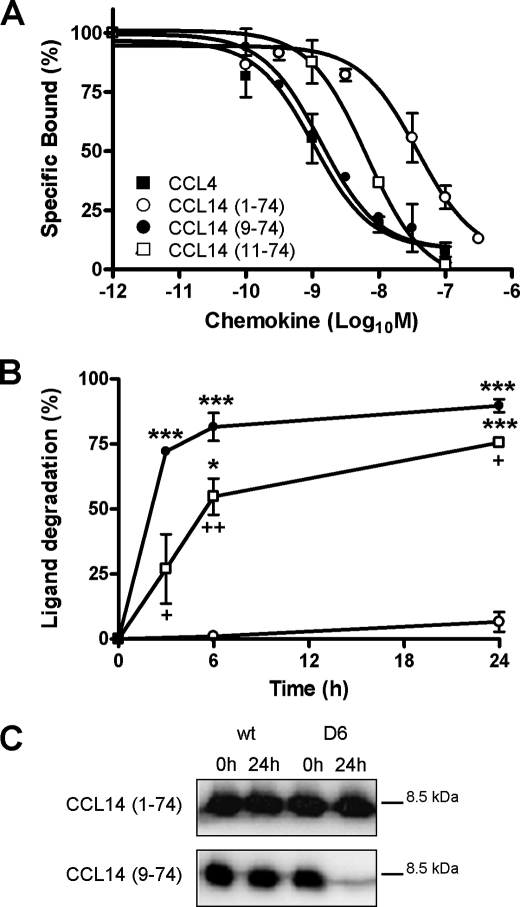FIGURE 1.
D6 binding and scavenging activities on CCL14 isoforms. A, competitive binding of 125I-hCCL4 to CHO-K1/hD6 transfectants in the presence of different concentrations of unlabeled human CCL4 (■), CCL14(1–74) (○), CCL14(9–74) (●), and CCL14(11–74) (□). B, kinetics of CCL14(1–74) (○), CCL14(9–74) (●), and CCL14(11–74) (□) degradation in human D6 stable cell lines. CHO-K1/hD6 transfectants were incubated with 1.16 nm CCL14(1–74), CCL14(9–74), or CCL14 (11–74) at 37 °C for the indicated periods. Results are 100 minus the percentage of input chemokine remaining in the supernatant as assessed by an ELISA test. C, supernatants derived from CHO-K1 and CHO-K1/hD6 transfectants incubated for 24 h with CCL14(1–74) or CCL14(9–74) were analyzed by SDS-PAGE and Western blot. Data shown in A and B are the mean ± S.E. of at least three independent experiments. Data shown in C represent one representative experiment of three performed. *, p < 0.05; ***, p < 0.0005, chemokine degradation of CHO-K1/hD6 versus CHO-K1 wild type cells (wt). +, p < 0.05; ++, p < 0.005, CHO-K1/hD6 degradation of CCL14(11–74) compared with CCL14(9–74).

